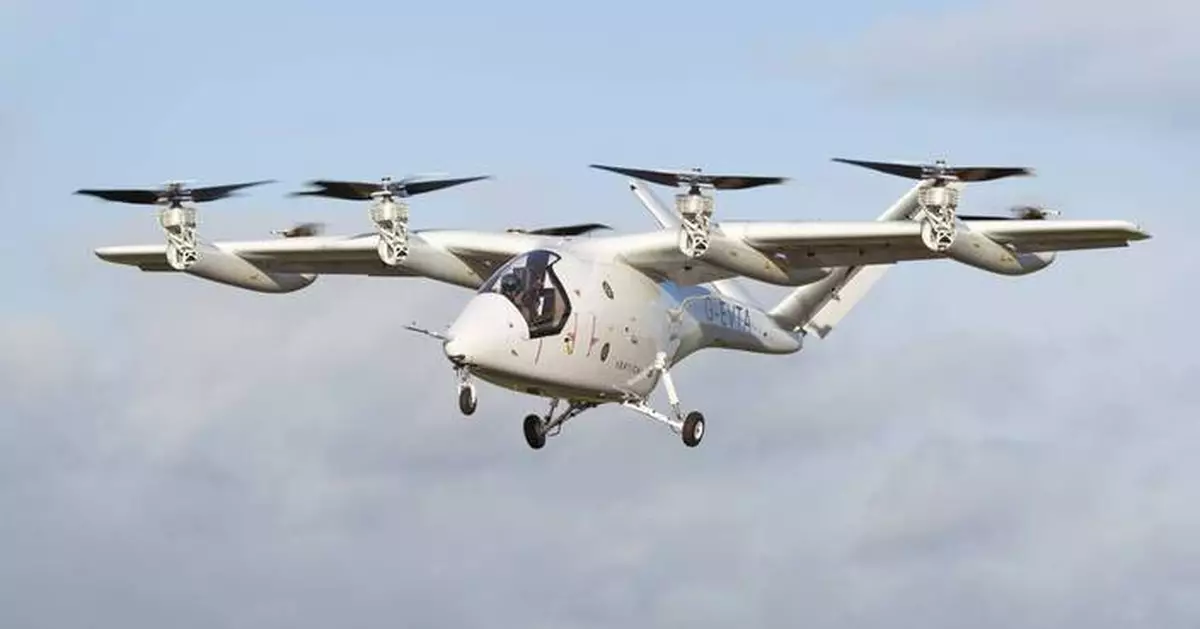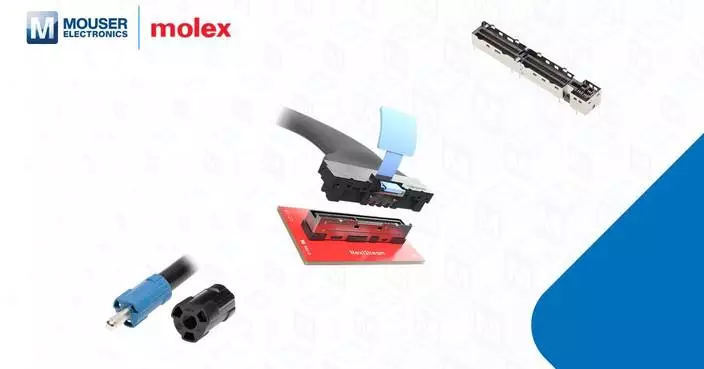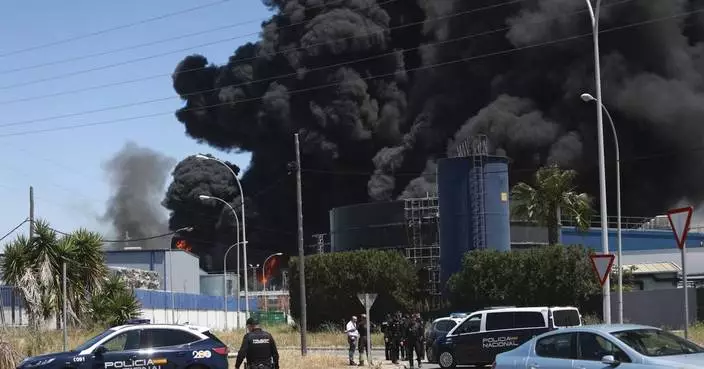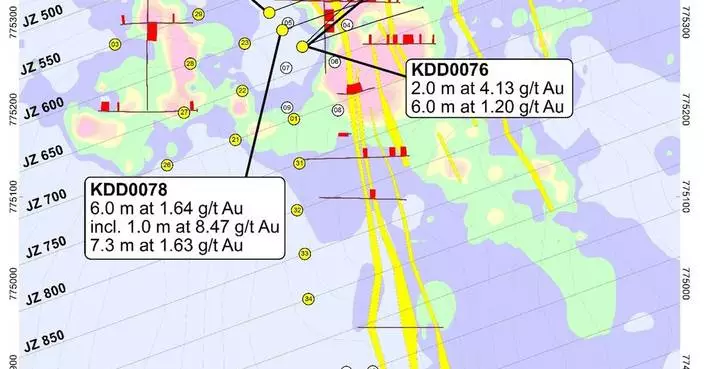LONDON & NEW YORK--(BUSINESS WIRE)--Jan 8, 2025--
Vertical Aerospace Ltd. (“Vertical” or the “Company”) (NYSE: EVTL; EVTLW), a global aerospace and technology company that is pioneering electric aviation, has taken another significant step in its testing programme by successfully completing its first piloted thrustborne flight manoeuvres.
This press release features multimedia. View the full release here: https://www.businesswire.com/news/home/20250108901737/en/
The milestone was achieved after the business received approval from the UK Civil Aviation Authority (CAA) to expand its Permit to Fly, enabling Vertical to progress from piloted thrustborne hover to piloted thrustborne low-speed flight manoeuvres at altitude. The latest flight included roll, yaw and spot turn manoeuvres and was flown by Simon Davies, Vertical’s Chief Test Pilot.
Completing the initial piloted thrustborne manoeuvres at its Flight Test Centre made Vertical only the second company worldwide to achieve this critical step using a full scale vectored thrust eVTOL aircraft.
Stuart Simpson, CEO of Vertical Aerospace, said: “Starting the year with this milestone is a fantastic achievement and testament to the dedication of our team and partners. Becoming one of only two companies globally to conduct piloted thrustborne flight manoeuvres in a full-scale vectored thrust eVTOL underscores the progress we’re making toward our Flightpath 2030 strategy and our vision to transform the way the world moves. The team is now focused on completing this phase while we prepare for the significant next step of wingborne flight.”
First thrustborne flight
Vertical’s VX4 aircraft has now progressed from piloted hover flight to piloted, low-speed manoeuvres using lift generated by the propellers. Thrustborne flights are designed to assess the aircraft’s stability, battery efficiency, control characteristics, aerodynamics, structural and dynamic loads and performance across different speeds, enabling further assessment of how the VX4 behaves under real-world flight conditions.
At the same time, Vertical will work with the CAA to expand its Permit to Fly, clearing the path for Phase 3 — wingborne flight tests. This phase, which includes flying beyond the airfield boundaries, will effectively serve as a mini-certification of the prototype, laying the groundwork for the VX4’s full certification.
Strengthening the Team
To support the growing demands of its flight test programme, Vertical has appointed Tim Eldridge as test pilot.
With over two decades of flight test experience in the Royal Navy, including testing aircraft such as the Sea King, Merlin, Chinook, and Lynx, Tim brings exceptional expertise to the team. His prior roles, including at Babcock, with whom Vertical is collaborating with on Emergency Medical Services (EMS), where Tim was a helicopter EMS pilot, as well as at QinetiQ and Airbus Helicopters further enhance Vertical’s flight test capabilities.
Notes to editors:
Piloted flight test programme explainer
Notes to Editors
About Vertical Aerospace
Vertical Aerospace is a global aerospace and technology company pioneering electric aviation. Vertical is creating a safer, cleaner and quieter way to travel. Vertical’s VX4 is a piloted, four passenger, Electric Vertical Take-Off and Landing (eVTOL) aircraft, with zero operating emissions. Vertical combines partnering with leading aerospace companies, including GKN Aerospace, Honeywell and Leonardo, with developing its own proprietary battery and propeller technology to develop the world’s most advanced and safest eVTOL.
Vertical has c.1,500 pre-orders of the VX4, with customers across four continents, including American Airlines, Japan Airlines, GOL and Bristow. Headquartered in Bristol, the epicentre of the UK’s aerospace industry, Vertical was founded in 2016 by Stephen Fitzpatrick, founder of the OVO Group, Europe’s largest independent energy retailer. Vertical’s experienced leadership team comes from top tier automotive and aerospace companies such as Rolls-Royce, Airbus, GM and Leonardo. Together they have previously certified and supported over 30 different civil and military aircraft and propulsion systems.
Forward-Looking Statements
This press release contains forward-looking statements within the meaning of the U.S. Private Securities Litigation Reform Act of 1995 that relate to our current expectations and views of future events. We intend such forward- looking statements to be covered by the safe harbor provisions for forward-looking statements as contained in Section 27A of the Securities Act and Section 21E of the Exchange Act. Any express or implied statements contained in this press release that are not statements of historical fact may be deemed to be forward-looking statements, including, without limitation, statements regarding the design and manufacture of the VX4, the features and capabilities of the VX4, business strategy and plans and objectives of management for future operations, including the building and testing of our prototype aircrafts on timelines projected, completion of the piloted test programme phases, selection of suppliers, certification and the commercialization of the VX4 and our ability to achieve regulatory certification of our aircraft product on any particular timeline or at all, our ability and plans to raise additional capital to fund our operations, the differential strategy compared to our peer group, expectations surrounding pre-orders and commitments, our future results of operations and financial position and expected financial performance and operational performance, liquidity, growth and profitability strategies, , our plans to mitigate the risk that we are unable to continue as a going concern, the transition towards a net-zero emissions economy, as well as statements that include the words “expect,” “intend,” “plan,” “believe,” “project,” “forecast,” “estimate,” “may,” “should,” “anticipate,” “will,” “aim,” “potential,” “continue,” “are likely to” and similar statements of a future or forward-looking nature. Forward-looking statements are neither promises nor guarantees, but involve known and unknown risks and uncertainties that could cause actual results to differ materially from those projected, including, without limitation: our limited operating history without manufactured non-prototype aircraft or completed eVTOL aircraft customer order; our potential inability to raise additional funds when we need or want them, or at all, to fund our operations; our limited cash and cash equivalents and recurring losses from our operations raise significant doubt (or raise substantial doubt as contemplated by PCAOB standards) regarding our ability to continue as a going concern; our potential inability to produce or launch aircraft in the volumes or timelines projected; the potential inability to obtain the necessary certifications for production and operation within any projected timeline, or at all; the inability for our aircraft to perform at the level we expect and may have potential defects; our history of losses and the expectation to incur significant expenses and continuing losses for the foreseeable future; the market for eVTOL aircraft being in a relatively early stage; any accidents or incidents involving eVTOL aircraft could harm our business; our dependence on partners and suppliers for the components in our aircraft and for operational needs; the potential that certain strategic partnerships may not materialize into long-term partnership arrangements; all of the pre-orders received are conditional and may be terminated at any time and any predelivery payments may be fully refundable upon certain specified dates; any circumstances; any potential failure to effectively manage our growth; our inability to recruit and retain senior management and other highly skilled personnel; we have previously identified material weaknesses in our internal controls over financial reporting which if we fail to properly remediate, could adversely affect our results of operations, investor confidence in us and the market price of our ordinary shares; as a foreign private issuer we follow certain home country corporate governance rules, are not subject to U.S. proxy rules and are subject to Exchange Act reporting obligations that, to some extent, are more lenient and less frequent than those of a U.S. domestic public company; and the other important factors discussed under the caption “Risk Factors” in our Annual Report on Form 20-F filed with the U.S. Securities and Exchange Commission (“SEC”) on March 14, 2024, as such factors may be updated from time to time in our other filings with the SEC. Any forward-looking statements contained in this press release speak only as of the date hereof and accordingly undue reliance should not be placed on such statements. We disclaim any obligation or undertaking to update or revise any forward-looking statements contained in this press release, whether as a result of new information, future events or otherwise, other than to the extent required by applicable law.
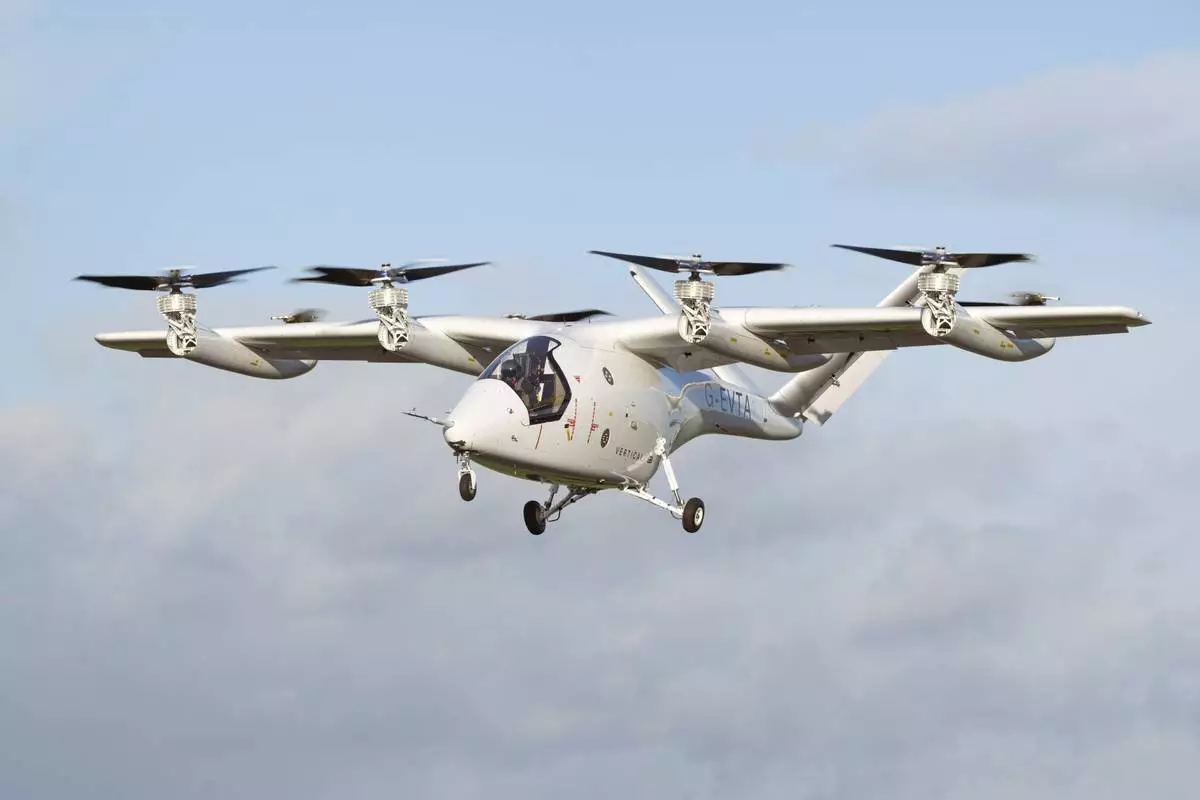

Vertical's VX4 prototype successfully completes its first piloted thrustborne flight manoeuvres. (Photo: Business Wire)


